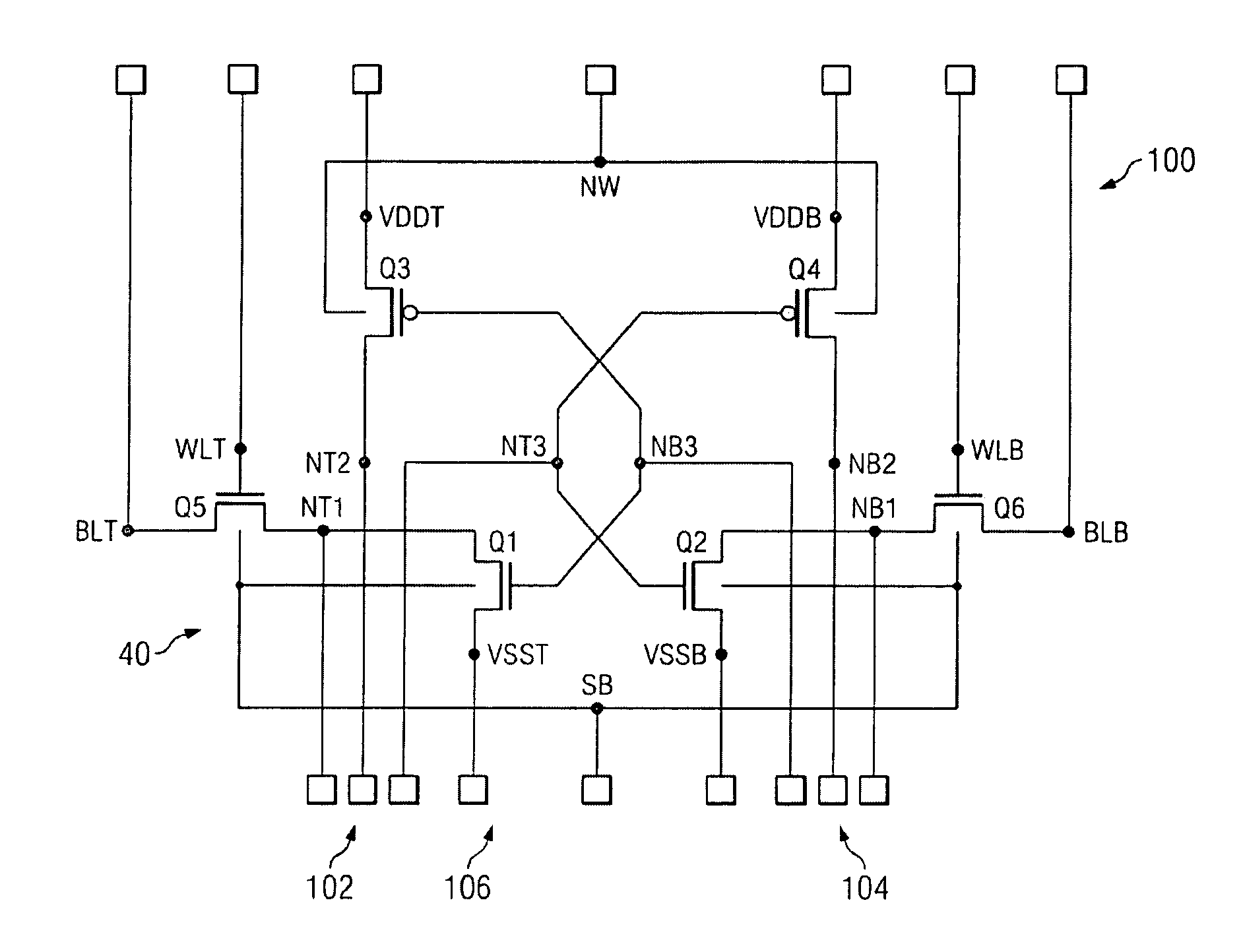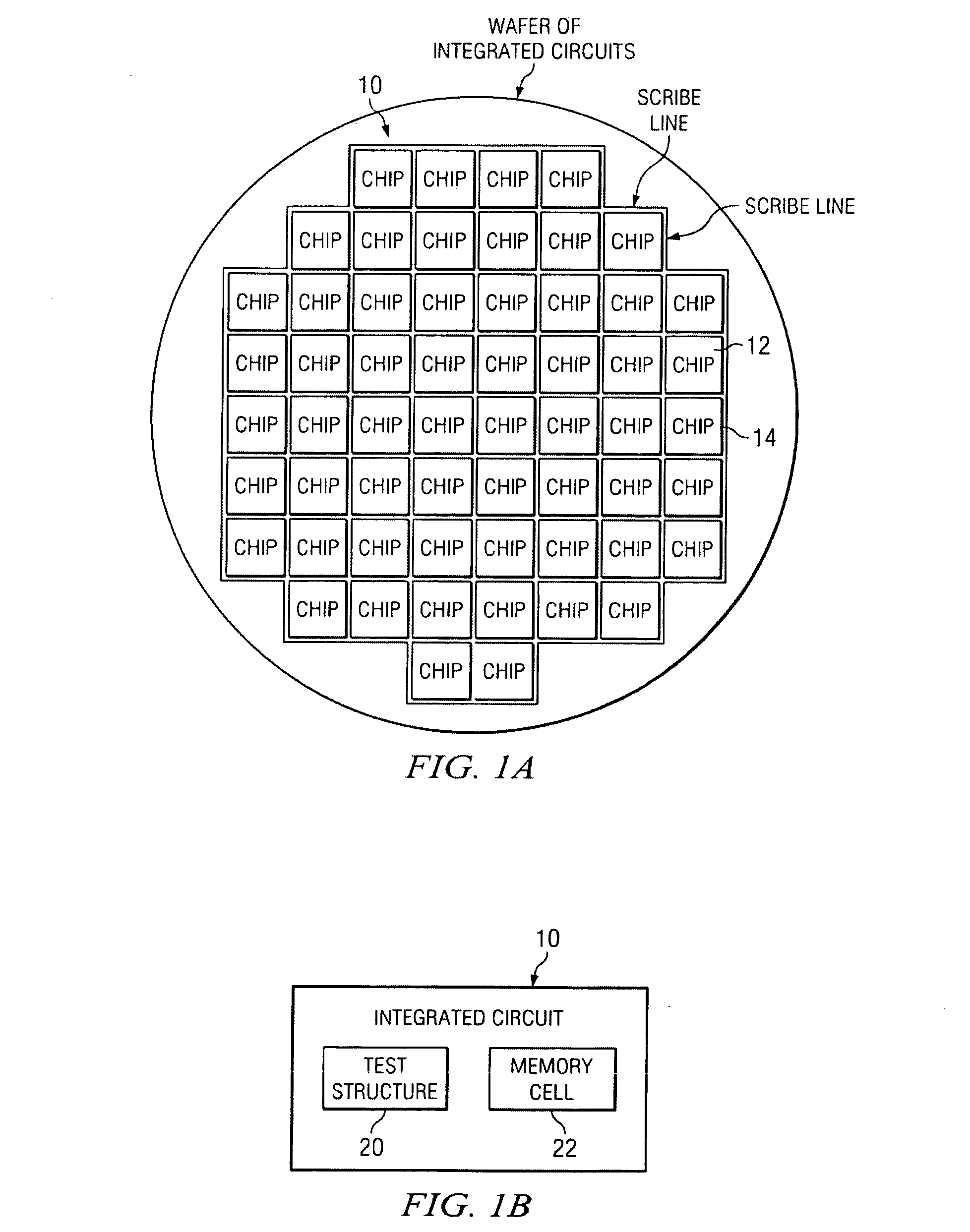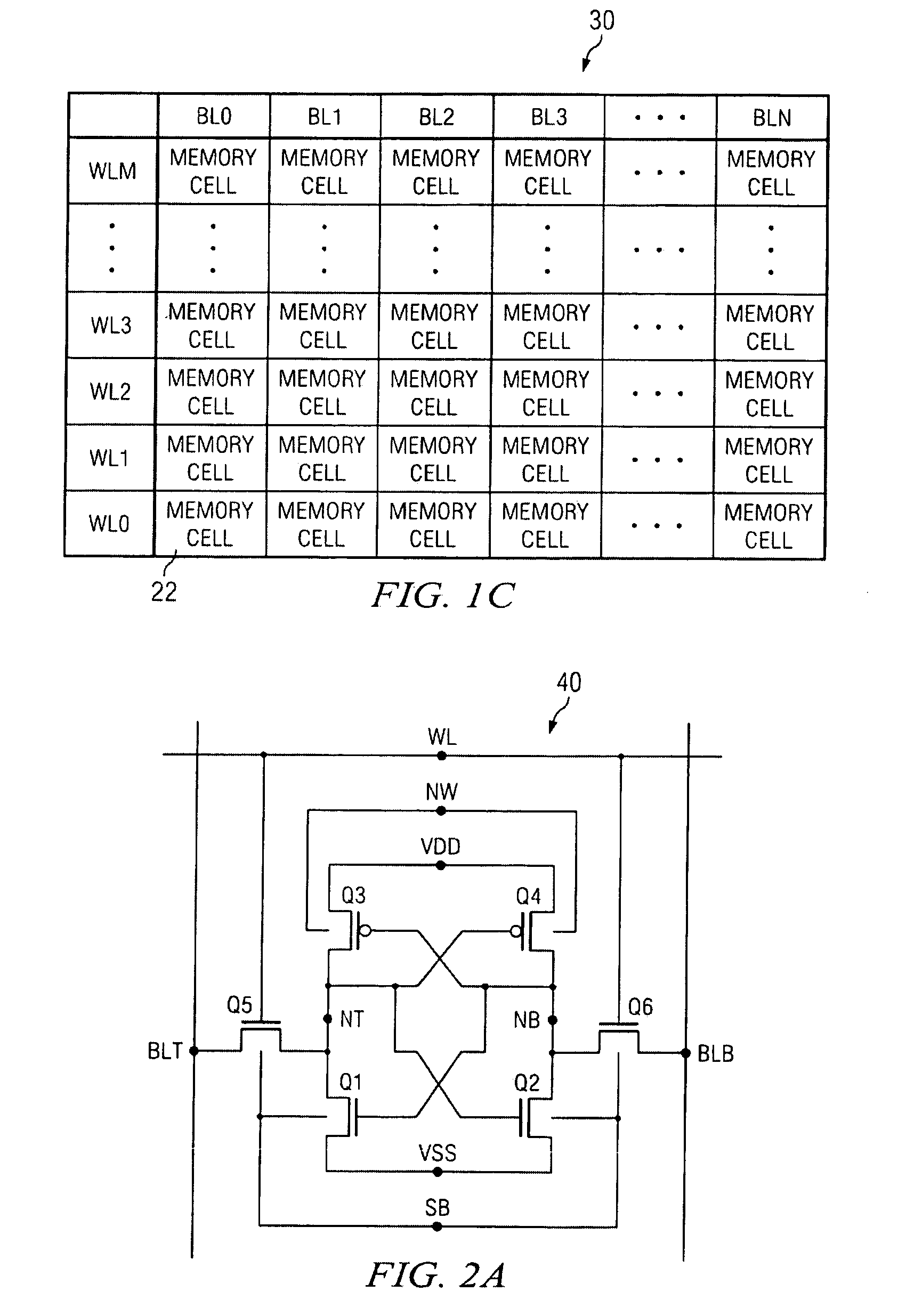Universal structure for memory cell characterization
a memory cell and universal structure technology, applied in the field of integrated circuits, can solve the problems of inability to obtain local mismatch information of the circuit elements of the memory cell, occupying a large fraction of the integrated circuit area, and a large amount of effort is usually spent to minimize the area of the memory cell
- Summary
- Abstract
- Description
- Claims
- Application Information
AI Technical Summary
Benefits of technology
Problems solved by technology
Method used
Image
Examples
Embodiment Construction
[0064]FIG. 1A is a diagram illustrating the relationship among an integrated circuit 10, a chip 12, and a scribe line 14.
[0065]The term “integrated circuit” used here includes both chip and scribe line regions. In particular, it includes test structures that are in a chip or in a scribe line.
[0066]The term “scribe line” refers to the region surrounding a chip and between chips where a saw can pass when sawing chips apart. Typically, some test structures are placed in a scribe line for characterizing circuits in a chip and for monitoring and control of the integrated circuit process.
[0067]FIG. 1B is a diagram illustrating the relationship among an integrated circuit 10, a test structure 20, and a memory cell 22 the test structure characterizes. In general, a test structure 20 and a circuit (such as the memory cell 22) the test structure characterizes can be independently placed in any regions of an integrated circuit 10.
[0068]FIG. 1C is a diagram illustrating a plurality of memory ce...
PUM
| Property | Measurement | Unit |
|---|---|---|
| structure | aaaaa | aaaaa |
| integrated circuit area | aaaaa | aaaaa |
| area | aaaaa | aaaaa |
Abstract
Description
Claims
Application Information
 Login to View More
Login to View More - R&D
- Intellectual Property
- Life Sciences
- Materials
- Tech Scout
- Unparalleled Data Quality
- Higher Quality Content
- 60% Fewer Hallucinations
Browse by: Latest US Patents, China's latest patents, Technical Efficacy Thesaurus, Application Domain, Technology Topic, Popular Technical Reports.
© 2025 PatSnap. All rights reserved.Legal|Privacy policy|Modern Slavery Act Transparency Statement|Sitemap|About US| Contact US: help@patsnap.com



